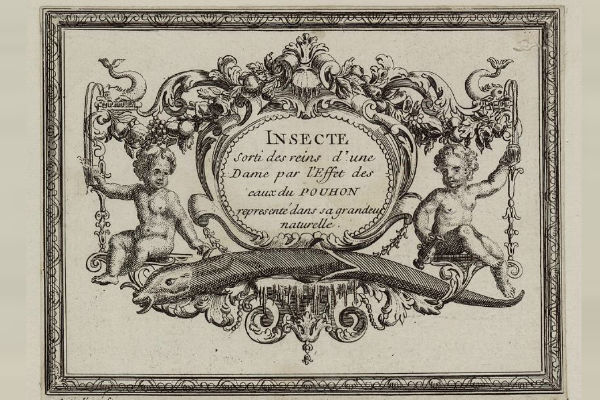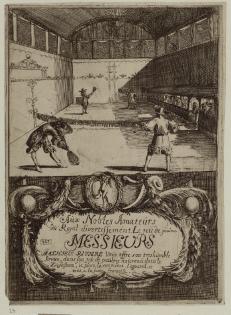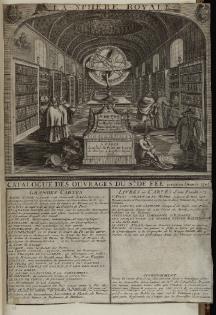Managing the collection using Vernon CMS Cataloguing module
The founder of Waddesdon Manor, Baron Ferdinand de Rothschild acquired a collection of printed paper ephemera relating to commerce in 1891. Most of the material came from the collection of his architect Gabriel Hippolyte Destailleur (1822-1893). After the prints arrived at Waddesdon, they were rearranged and pasted into four leather-bound volumes and this is how they appear today. The volumes contain over 700 trade cards (early shop advertisements) and related items, mostly from France, but also from Germany and elsewhere on the continent.

They date from the early seventeenth to early nineteenth centuries and are for suppliers as diverse as hat-makers, stationers, goldsmiths, print-sellers and confectioners. Together they offer a unique insight into the commercial and social world of the past.
It was made possible through funding from the Leverhulme Trust and the British Academy and was a joint venture between the University of Warwick and Waddesdon Manor. We also worked closely with the John Johnson collection in the Bodleian Library.
The catalogue is designed to be used by anyone interested in ephemera. All cards have been transcribed in their original language and translated into English. The level of recorded detail reflects the diverse subject matter and wide disciplinary appeal of the trade cards ranging from French culture, economic history, social history, art history, design history etc.

We designed a new cataloguing strategy to bring together different practises and disciplines in the hope of turning a specialist resource into an enlivening tool to inspire people to explore new areas of the humanities but also to give the general public a window into commerce and shopping in the eighteenth century.
The catalogue contains full transcriptions in the original language with an English translation, descriptions of the visual content, specialist multilingual indexes of trades and products, subject indexes for visual content, as well as indexes reflecting academic and curatorial specialisms.
THE PROJECT
We used standard fields in Vernon CMS Cataloguing module and also made full use of the User Defined Fields for these specialised indexes. We also fine-tuned the system by repurposing certain fields using the Field Name Override facility.
We were able to record specialised information through being able to add new fields and repurpose existing ones. Being able to extract information in different ways was also hugely flexible.
We used the User Defined Authority fields to create indexes of trades, services and products and because the material is in several languages and our users from different countries, we wanted to retain the ability to search in the original language as well as in English. We used the hierarchical structure to group trades into broad categories in English and then linked these to the foreign language term as described in the text on the object, and linked this to a translation. By doing this we hoped to give context to the indexes and make them as accessible as possible to both specialist and general audiences.
We explored new ways to use Vernon CMS to the full in this project. Throughout, our intention was that it benefit our cataloguing strategy across the whole collection and has resulted in a number new indexes.
Vernon CMS allowed us to use fields and indexes for specific internal purposes for cataloguing and collection management data but to be able to present them differently for public access. For example we combined media and techniques indexes for online searching.
Also we re-purposed fields and linked them to existing authorities. We use the Documentation field for bibliographic citations of the object but in the case of our Trade Card Collection very few have been published. Often there was relevant related bibliographic information which we wanted to include in the catalogue. We therefore used one of the user defined authority fields and linked it to the Document authority and named the field Related Literature so that the bibliographic details were recorded using a consistent data structure.

We used and adapted various elements of the AAT but also incorporated standards established by other specialist collections like the Library of Congress Subject terms and the French equivalent, Rameau.
Often internal functionality is a factor in deciding where data should go. The internal index search function on the Title and Other Title fields make them particularly useful for a range of key data and so rather than re-purposing an unused field, we make extensive use of symbolics (calculated fields) to extract data for reporting and publishing on the web.
RESULTS
We reached the goals that we set out to achieve. It has led to considerable interest from academics and more general interest. One of the cards was a source of inspiration for a novelist. A key measure of the success is the steady number of requests to use images which we now have.
The Trade Cards project also led to other collaborative post doctoral projects which have also had a specialist focus. In each project we have taken advantage of the dedicated resources to develop particular indexes which can then have a wider application for cataloguing the rest of the collection.
The project was praised and warmly received by our governing body and the process has had a positive impact on our ongoing cataloguing processes.